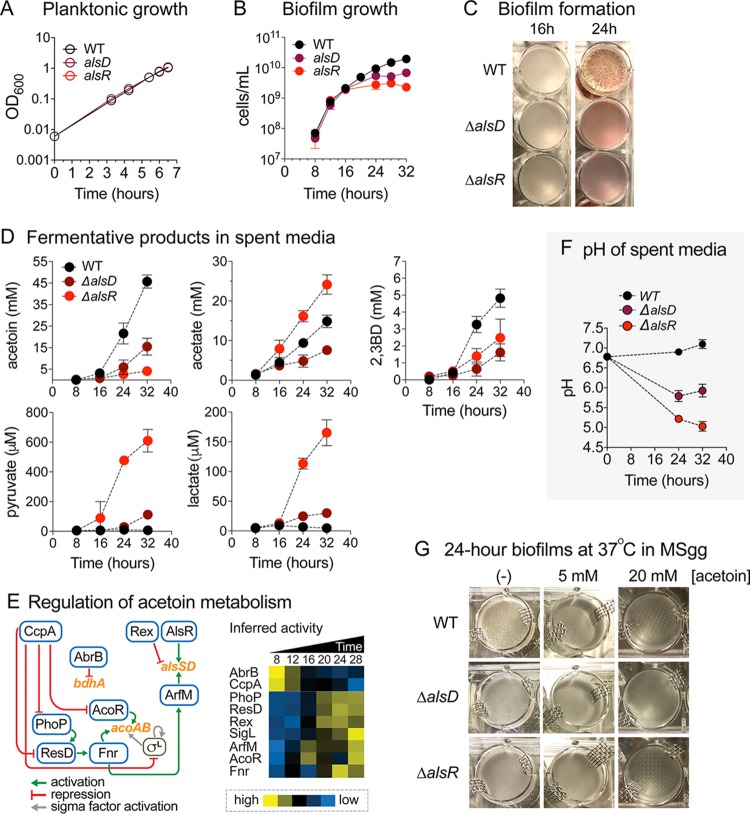FIG 12.
Acetoin biosynthesis is required for robust biofilm growth. (A) The exponential-phase growth (OD600) of ΔalsD and ΔalsR mutants was indistinguishable from that of the WT. Data represent averages of results from 3 biological replicates ± SEM. (B and C) Biofilm development was severely impaired with respect to growth (B) and formation (C) in ΔalsD and ΔalsR mutants after 16 h in terms of overall cell growth (cells per milliliter), pellicle thickness, and development of intricate biofilm structures. Data represent averages of results from 3 biological replicates ± SEM. (D) Fermentation products of spent media. Spent media of WT, ΔalsD, and ΔalsR biofilms at 8, 16, 24, and 32 h of growth were subjected to 1H NMR analysis. Data represent averages of results from 6 biological replicates ± SEM. (E) Regulation of acetoin metabolism. Acetoin biosynthetic genes alsS-alsD and acoA-acoB are regulated by interconnected webs of transcription factors, including AlsR, Rex, ArfM, Fnr, AcoR, SigL, and CcpA. 2,3-Butanediol biosynthetic gene bdhA is transcriptionally repressed by AbrB. The heat map on the right shows temporal inferred activities of transcription factors involved in the pathway. Yellow, high activity; blue, low activity. (F) pH of spent media. Line graph shows pH of WT, ΔalsD, and ΔalsR biofilm media at 24 and 32 h of growth. Data represent averages of results from 4 biological replicates ± SEM. (G) Acetoin addition to MSgg medium did not enhance biofilm growth of B. subtilis WT, ΔalsD, or ΔalsR. B. subtilis WT, ΔalsD, and ΔalsR were grown in MSgg medium with 0, 5, or 20 mM acetoin. Pictures show the growth level under each set of conditions after 24 h of incubation at 37°C.

